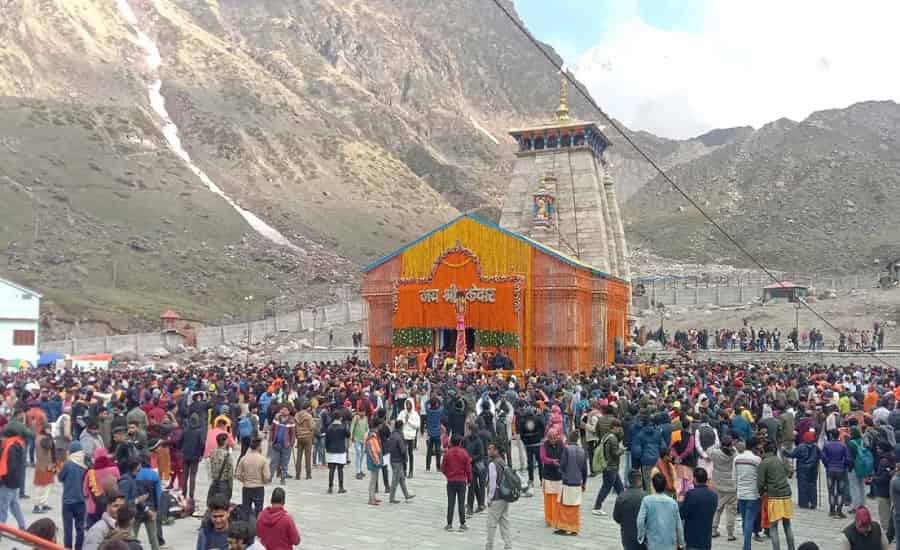History and Mythology About Kedarnath
Kedarnath is a Hindu shrine located in the Indian state of Uttarakhand, and it has a rich history and mythology associated with it.
According to Hindu mythology, the Kedarnath temple was built by the Pandavas, the heroes of the Hindu epic, the Mahabharata, as a way to atone for their sins. Lord Shiva, who was being pursued by the Pandavas, took the form of a bull and disappeared into the ground at Kedarnath. The temple is believed to be built on the spot where Lord Shiva disappeared, and the lingam inside the temple is said to have been formed naturally by the elements of earth, air, water, and fire.
In terms of its historical significance, the exact date of the construction of the Kedarnath temple is not known, but it is believed to be more than 1000 years old. The temple has undergone several renovations and rebuilding efforts throughout its history, due to natural disasters such as heavy snowfall, landslides, and earthquakes.

The Kedarnath temple is considered one of the holiest places of pilgrimage for Hindus and is one of the four sacred shrines in India, known as the Char Dhams. Thousands of pilgrims visit Kedarnath every year to pay homage to Lord Shiva and seek his blessings.
Legends
There are several legends associated with the Kedarnath temple and its significance in Hindu mythology. Some of the most notable legends are:
Legend of Pandavas: It is said that the Pandavas, the heroes of the Hindu epic, the Mahabharata, built the Kedarnath temple as a way to atone for their sins. According to the legend, Lord Shiva tried to evade the Pandavas by taking the form of a bull, but was finally cornered by the Pandavas at Kedarnath. Lord Shiva then disappeared into the ground, leaving only his hump on the surface. The temple is believed to be built on the spot where Lord Shiva disappeared into the ground.
Legend of Nara and Narayana: It is believed that the sages Nara and Narayana meditated at Kedarnath for many years, and Lord Shiva was so pleased with their devotion that he granted them a permanent dwelling place at the temple.
Legend of the Lingam: The lingam, a symbol of Lord Shiva, at the Kedarnath temple is said to have been formed naturally by the elements of earth, air, water, and fire.
These legends and others have made Kedarnath a significant pilgrimage site for Hindus and a place of reverence for followers of Lord Shiva.
Kedarnath Shrine was under Snow for 400 years
It is not accurate to say that Kedarnath was buried in snow for 400 years. According to historical records and local legends, the Kedarnath temple has faced several natural disasters, including heavy snowfall, landslides, and earthquakes, which have caused damage to the temple and its surrounding area. However, the temple has also undergone several renovations and rebuilding efforts throughout its history. The most recent disaster occurred in June 2013, when flash floods and landslides caused extensive damage to the temple and nearby villages. While the temple itself was not completely buried in snow, the surrounding area received significant snowfall, which caused damage to the infrastructure and made it difficult for pilgrims to reach the temple.
“The strong Hindu Religion’s ” karma” principle of life & living holds true if one evaluates the legends behind this ” magnificient”jyotirling temple revered by so many!!!
On 24th September I with my three friends have decided to visit the holy ground Kedarnath today is 19th September 2023 so I thought it to get to some historical information about the Kedarnath temple and I got your blog first. To tell the truth at the very first time the mythological information you have given here and what the legends we got here is really enriching.
all the best for your journey
Bilkul shi shi baat h
We just visited kedar shrine on 28th of September! It was one of the base experiences of my life✨
On 10 th of this October we 54 people from Kerala visit Kedarnath temple. There was snow fall and rain also. Shivering cold had great experience. My great experience in life.
Hm baba kedarnath ke darshan kr aae bade dino se socha tha 17.10.23 ko baba kedarnath ne bulya
hmm….. kedarnath naam sunke hi uske baare m janne ki excitement s mane google m site dekhi its gorgeous…… i have a dream to go kedarnath and vrindavan….. kya pata ab kab hoga….
hmm….. kedarnath naam sunke hi uske baare m janne ki excitement s mane google m site dekhi its gorgeous…… i have a dream to go kedarnath and vrindavan….. kya pata ab kab hoga….
Heaven of earth